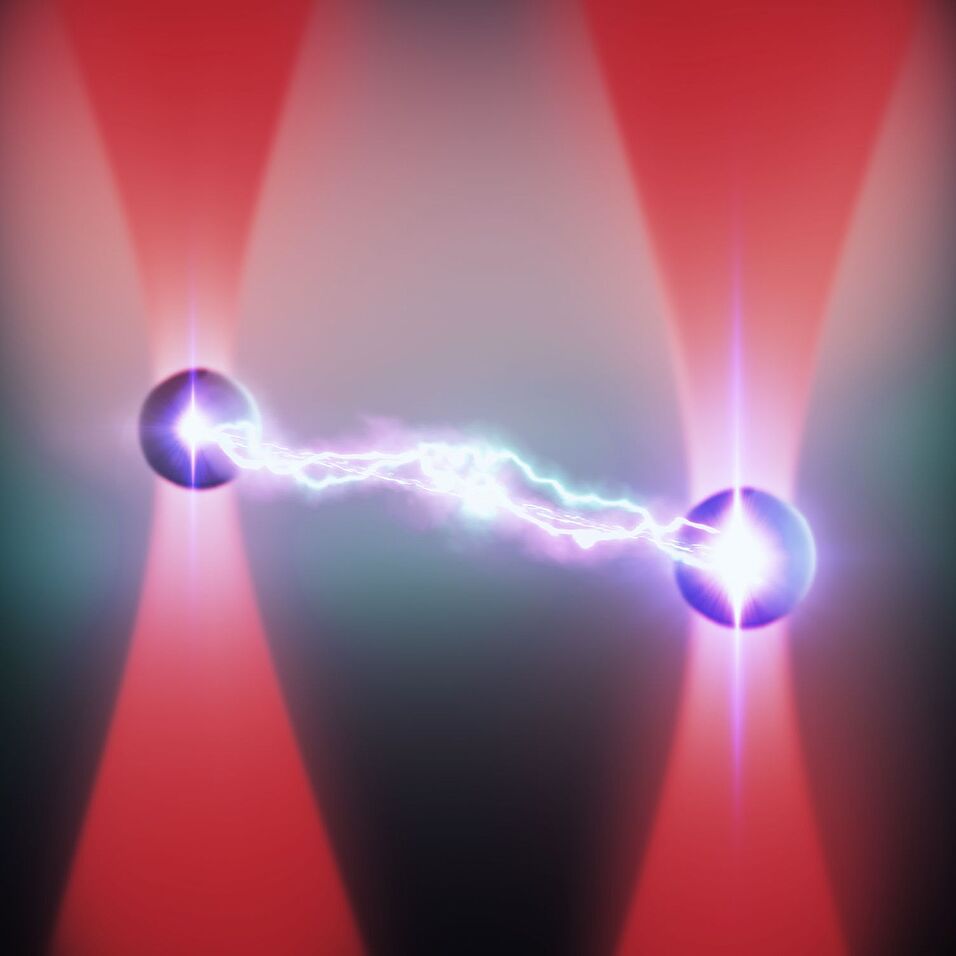We theoretically predict and experimentally observe the consequences of phase-controlled coherent scattering between levitated nanoparticles. This new scheme allows to realize full control over dipole-dipole interactions, resulting in tunable symmetric as well as non-reciprocal coupling between the particles. By using a Spatial Light Modulator (SLM) we generate two independent, coherent optical traps for 210nm diameter silica beads. The coherence of the light fields allows dipole radiation scattered by trapped particles to interfere with the trapping fields, coupling their motion. This interaction, consisting of a reciprocal and a non-reciprocal contribution, can be controlled by tuning inter-particle distance and the relative phase of the trapping light fields. The inherent phase encoding of the axial particle motion enhances the effects of the coupling, allowing us to achieve strong conservative coupling along this direction. When tuning towards non-conservative coupling we observe phase locking and frequency degeneracy due to the non-reciprocal interactions being dominant. We also used the trap polarization to switch off the optical interaction. Due to the pre-charging of the particles, this allows us to observe strong electrostatic coupling in the form of normal-mode splitting in the motional spectrum. Our results provide a route to developing fully programmable many-body systems of interacting nanoparticles with tunable nonreciprocal interactions, which are instrumental for exploring entanglement and topological phases in arrays of levitated nanoparticles.
Publication in Science:
Jakob Rieser, Mario A. Ciampini, Henning Rudolph, Nikolai Kiesel, Klaus Hornberger, Benjamin A. Stickler, Markus Aspelmeyer and Uroš Delić
"Tunable light-induced dipole-dipole interaction between optically levitated nanoparticles"

